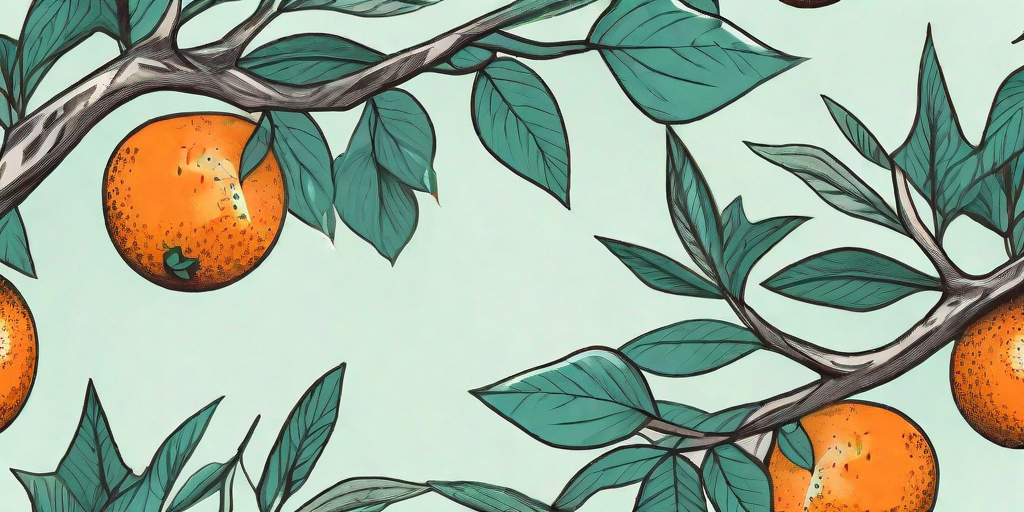
When it comes to the world of citrus, there's a lot more than meets the eye. From the sweet tanginess of the fruit itself to the fragrant aroma of its blossoms, orange trees are a true delight. But, there's one question that has been prickling the minds of many: do orange trees have thorns? Let's dive into the thorny issue and peel back the truth.
The Root of the Matter: Orange Tree Basics
Before we get to the point (pun intended), let's start with the basics. Orange trees, scientifically known as Citrus sinensis, are part of the Rutaceae family. They are evergreen, flowering trees, typically growing 9 to 10 meters tall, though some old specimens can reach up to 15 meters. They are best known for their juicy, sweet fruit, which is a staple in many diets worldwide.
Orange trees are native to eastern Asia, specifically southern China and northeastern India. However, they have been widely cultivated in other parts of the world, including the Mediterranean region, South America, and the southern United States. They thrive in subtropical and tropical climates, requiring plenty of sunshine and well-drained soil.
Thorns or No Thorns?
Now, let's get to the pointy end of the stick. Yes, orange trees do have thorns. These thorns are typically slender, sharp, and woody, and can be found along the branches. They can range from a harmless half-inch to a rather intimidating 3 inches in length. However, not all orange trees are created equal, and the presence and size of thorns can vary greatly depending on the variety and age of the tree.
Young orange trees tend to have more thorns compared to mature ones. As the tree ages, it often loses its thorns, or they may become smaller and less noticeable. Some varieties, such as the 'Washington Navel' and 'Valencia', are known for having fewer thorns, while others, like the 'Seville' and 'Bergamot', are more prickly customers.
Why Do Orange Trees Have Thorns?
Thorns on orange trees serve a similar purpose to thorns on roses or spikes on cacti - they are a form of defense. These sharp appendages deter animals from munching on their leaves and fruit, helping the tree to survive and reproduce.
However, thorns are not the only defense mechanism in an orange tree's arsenal. They also produce a range of chemical compounds, including essential oils and bitter flavonoids, which can deter pests and diseases. So, while the thorns may be the most visible form of defense, they are just one part of a multi-pronged approach to survival.
How to Handle Thorny Orange Trees
While the thorns of an orange tree can be a bit of a nuisance, especially when pruning or picking fruit, they are not something to be overly concerned about. With a bit of care and the right tools, you can safely navigate your way around these prickly problems.
When pruning or handling thorny orange trees, it's a good idea to wear thick gloves and long sleeves to protect your skin. It's also wise to use long-handled pruning shears, which can help you reach into the tree without getting too close to the thorns.
When it comes to pruning, less is often more. Orange trees don't require a lot of pruning, and over-pruning can stress the tree and stimulate more thorn growth. So, only prune when necessary, such as to remove dead or diseased wood, or to shape the tree.
FAQs
Do all citrus trees have thorns?
Most citrus trees, including lemons, limes, and grapefruits, do have thorns, although the size and number can vary greatly depending on the variety and age of the tree. Some cultivated varieties have been bred to be thornless or nearly thornless.
Can you remove the thorns from an orange tree?
While it's possible to physically remove the thorns from an orange tree, it's generally not recommended. The thorns serve a purpose, and removing them can stress the tree and stimulate more thorn growth. Plus, it's a lot of work for little gain.
Are the thorns on an orange tree dangerous?
While the thorns on an orange tree can certainly give you a nasty poke, they are not generally considered dangerous. However, it's always a good idea to wear protective clothing when handling thorny plants, and to keep children and pets away from them.
Conclusion
So, there you have it. The truth has been peeled back, and the thorny question answered: yes, orange trees do have thorns. But don't let that deter you from growing these wonderful trees. With their fragrant blossoms, lush foliage, and delicious fruit, orange trees are a joy to have in any garden - thorns and all.
Remember, a little prickliness is a small price to pay for a bounty of juicy oranges. So, don your gardening gloves, arm yourself with knowledge, and embrace the thorny beauty of the orange tree.











